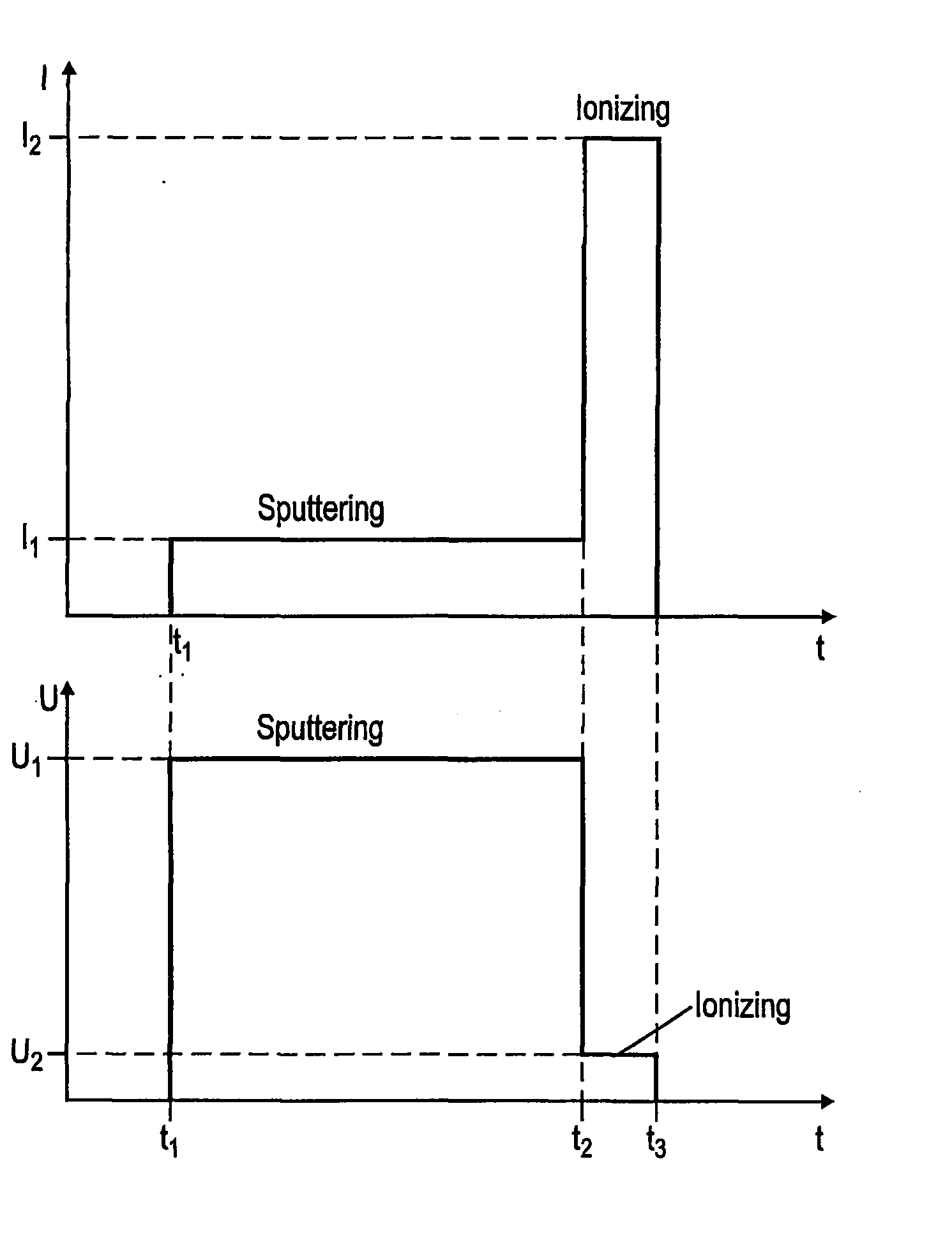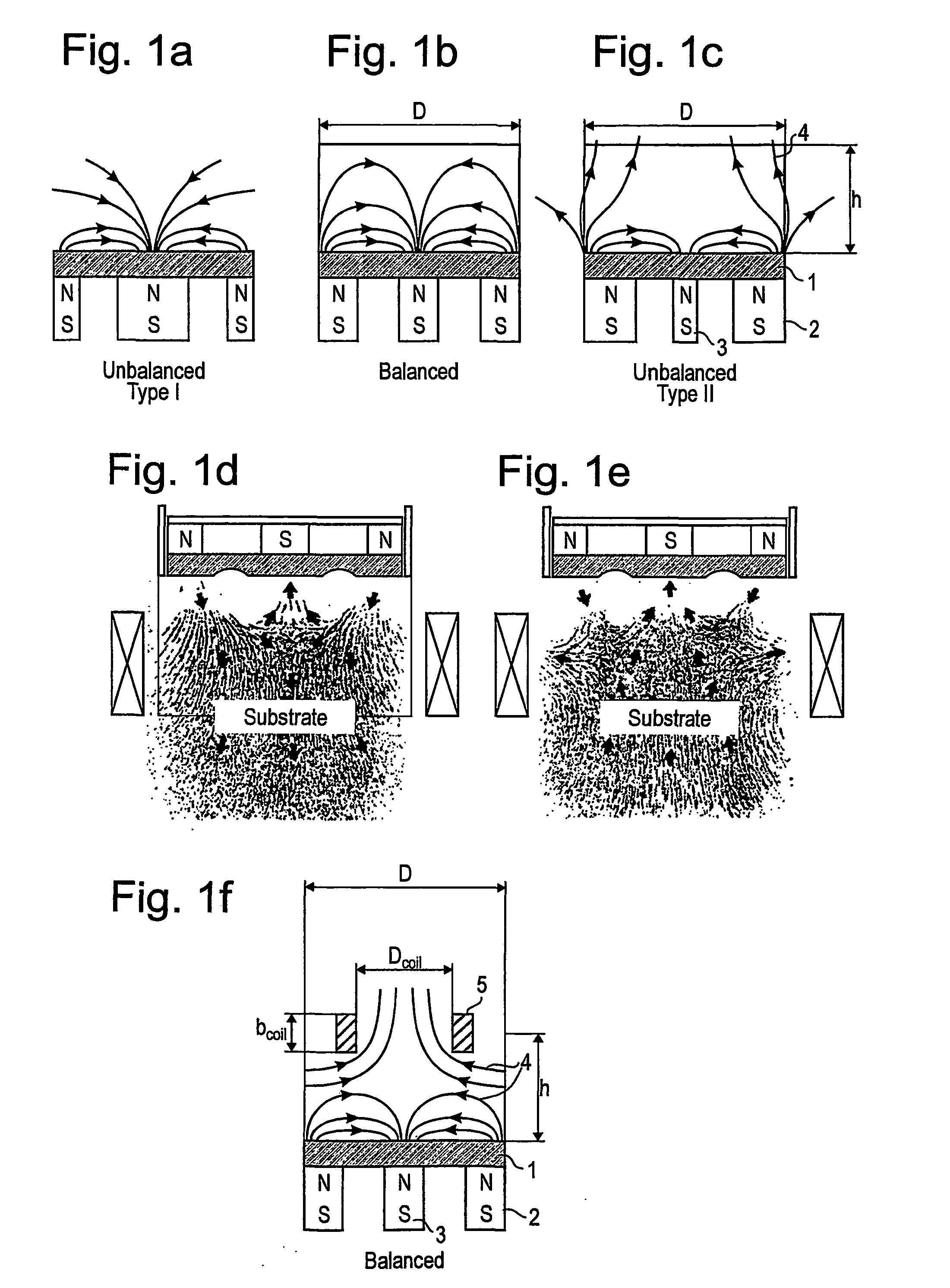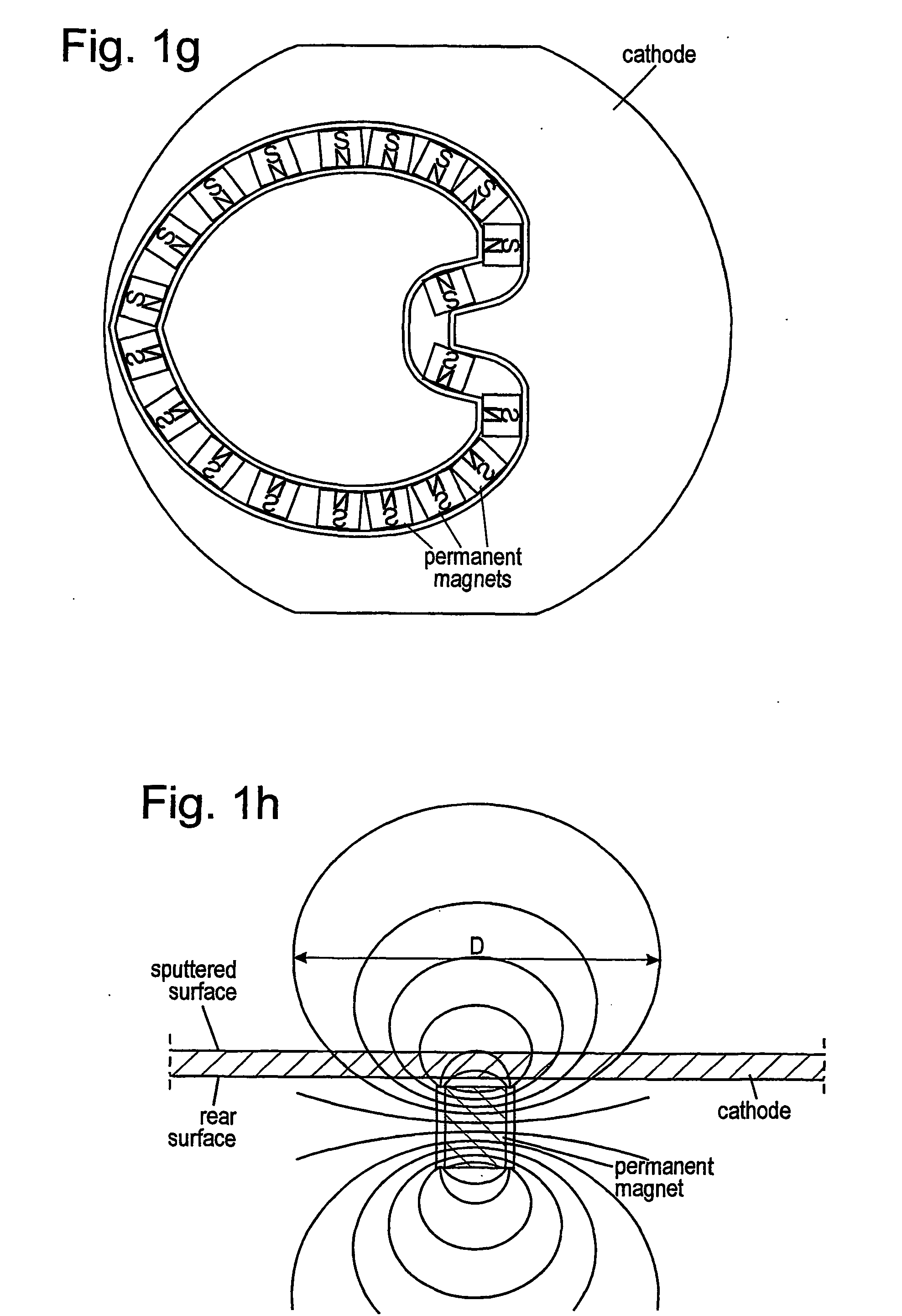Method and apparatus for plasma generation
a plasma flow and apparatus technology, applied in the field of methods and apparatus for generating plasma flows, can solve the problems of high anode-cathode potential drop, limited anode-cathode voltage drop during the starting period of the discharge, and limited anode-cathode voltage drop during the entire discharge time, so as to increase the driving current and prevent the transition. , the effect of high probability of arc discharg
- Summary
- Abstract
- Description
- Claims
- Application Information
AI Technical Summary
Benefits of technology
Problems solved by technology
Method used
Image
Examples
second embodiment
[0093]FIG. 5 is a diagram similar to that of FIG. 4 but here, the time intervals of the sputtering and ionizing discharges are separated by a short time interval of length A=(t3-t2) during which no voltage is applied.
third embodiment
[0094]FIGS. 6a, 6b are diagrams of the current as a function of time illustrating how the pulses can be applied according to a In the diagram of FIG. 6a a constant current IDC is shown used for achieving the sputtering discharge. This constant current is combined with a pulsed ionizing discharge as shown in FIG. 6b, the driving current I2 during the pulses of the ionizing discharges being considerably higher than the constant current. t3 is the start time of the intervals of the ionizing discharges beginning and t4 is the time when the ionizing discharges end. FIG. 7a is a diagram showing the conductivity δ and plasma density n as a function of time in the plasma confinement region. The driving current pulses are shown in the diagram of FIG. 7b as a function of time. The filling of the plasma confinement region by metal vapor can be produced by a DC discharge, see FIGS. 6a, 6b, or by pulsed low current discharges, as in FIGS. 3a, 3b, 4 and 5. In FIG. 7a δmax and nmax are the maxima...
PUM
| Property | Measurement | Unit |
|---|---|---|
| frequency | aaaaa | aaaaa |
| peak voltages | aaaaa | aaaaa |
| frequency | aaaaa | aaaaa |
Abstract
Description
Claims
Application Information
 Login to View More
Login to View More - R&D
- Intellectual Property
- Life Sciences
- Materials
- Tech Scout
- Unparalleled Data Quality
- Higher Quality Content
- 60% Fewer Hallucinations
Browse by: Latest US Patents, China's latest patents, Technical Efficacy Thesaurus, Application Domain, Technology Topic, Popular Technical Reports.
© 2025 PatSnap. All rights reserved.Legal|Privacy policy|Modern Slavery Act Transparency Statement|Sitemap|About US| Contact US: help@patsnap.com



